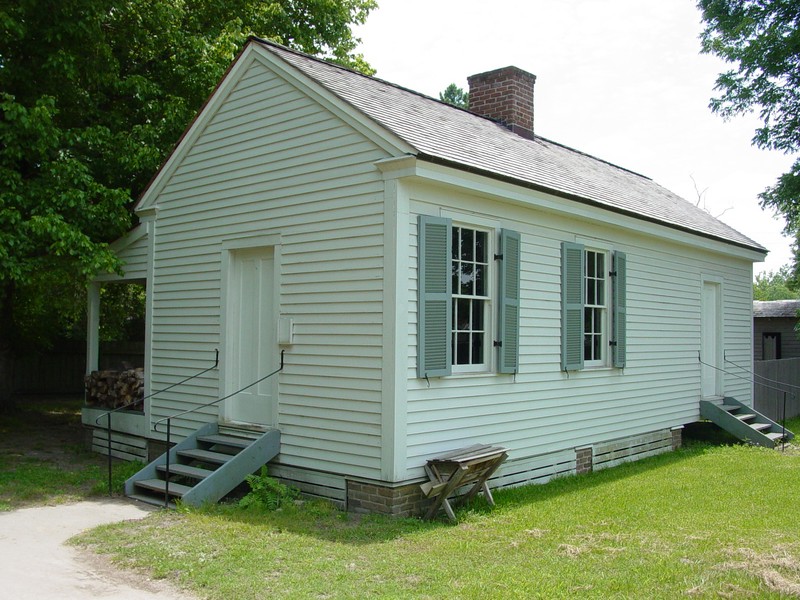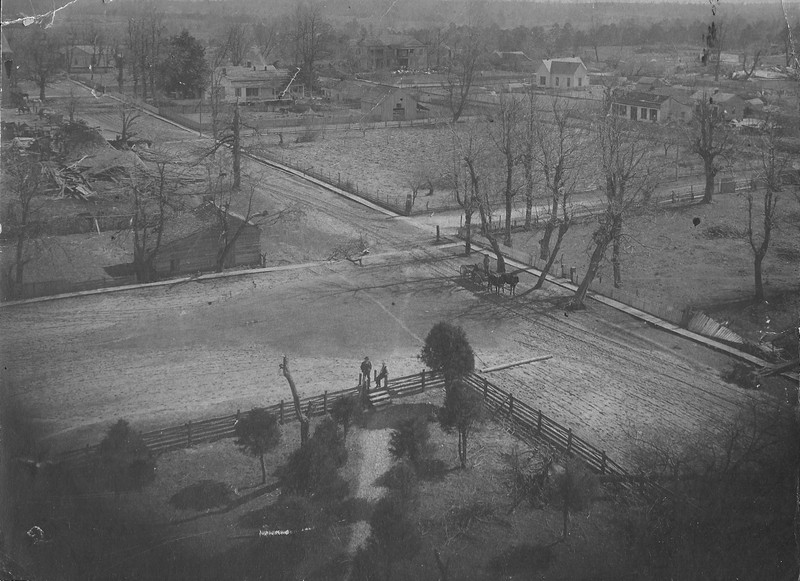Sanders Kitchen (Reconstructed 1995)
Introduction
Text-to-speech Audio
Reconstructed in 1995, the Sanders Kitchen is based on a similar structure seen in pictures of the property in 1907. Separate from the main house, the kitchen would have been the residence for the slaves owned by Simon T. Sanders. They would have lived and worked out of the building. Guided tours are available of the building. Visit the Historic Washington State Park Park Visitor Center for more information.
Images
Sanders Detached Kitchen

Sanders House after 1907 Tornado

Backstory and Context
Text-to-speech Audio
A detached kitchen was very common throughout many homes in the antebellum south. This was partially due to reducing excessive heat in the house, particularly during the warmer summer months, and also having a separate location for enslaved people of a house to work and live.
In 1859 the value of the lots owned by Simon Sanders increases from $1,500 to $4.000. This indicated additional structures built on the site. It is believed the two-room detached kitchen was completed around this time. By 1860, Simon Sander had 6 slaves in his household that probably lived in the detached kitchen. His earliest slave was Betsy Cary and later Eliza Thomas. It is believed that Eliza is the daughter of Betsy. In 1860, they both are living in the Sanders household and 4 children that are slaves. The children are believed to be the offspring of Eliza Thomas.
After emancipation some enslaved persons stayed with the families they had been a part of before the Civil War. Betsy Carry continued to live in the Sanders household along with Lucy Shepperson and her child. It is believed Lucy is the granddaughter of Betsy Cary.
The Sanders kitchen was reconstructed in 1995 based on archeological study that was completed of the site in the 1980s. Archeologists located the original foundation of the detached kitchen and the building was rebuilt based on the findings and the photograph of the building taken in 1907.
Sources
Brooke, Steven. Historic Washington, Arkansas. Gretna, Louisiana. Pelican Publishing Company, 2000.
Kwas, Mary L.. Digging for History at Old Washington. Fayetteville, Arkansas. The University of Arkansas Press, 2009.
Medearis, Mary. Washington, Arkansas : History on the Southwest Trail. Hope, Arkansas. Copies + Office Solutions, 1984.
Williams, Charlean Moss. The Old Town Speaks : Washington, Hempstead County, Arkansas, gateway to Texas, 1835, Confederate Capital, 1863. Houston, Texas. The Anson Jones Press, 1951.
Williams, Joshua. Washington. Images of America. Charleston, South Carolina. Arcadia Publishing, 2014.
Historic Washington State Park Collection
Historic Washington State Park Collection
